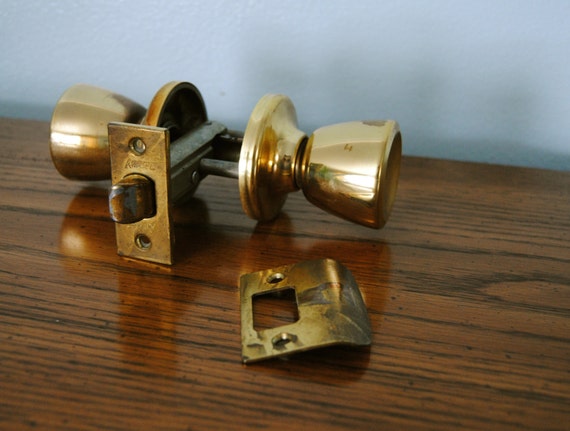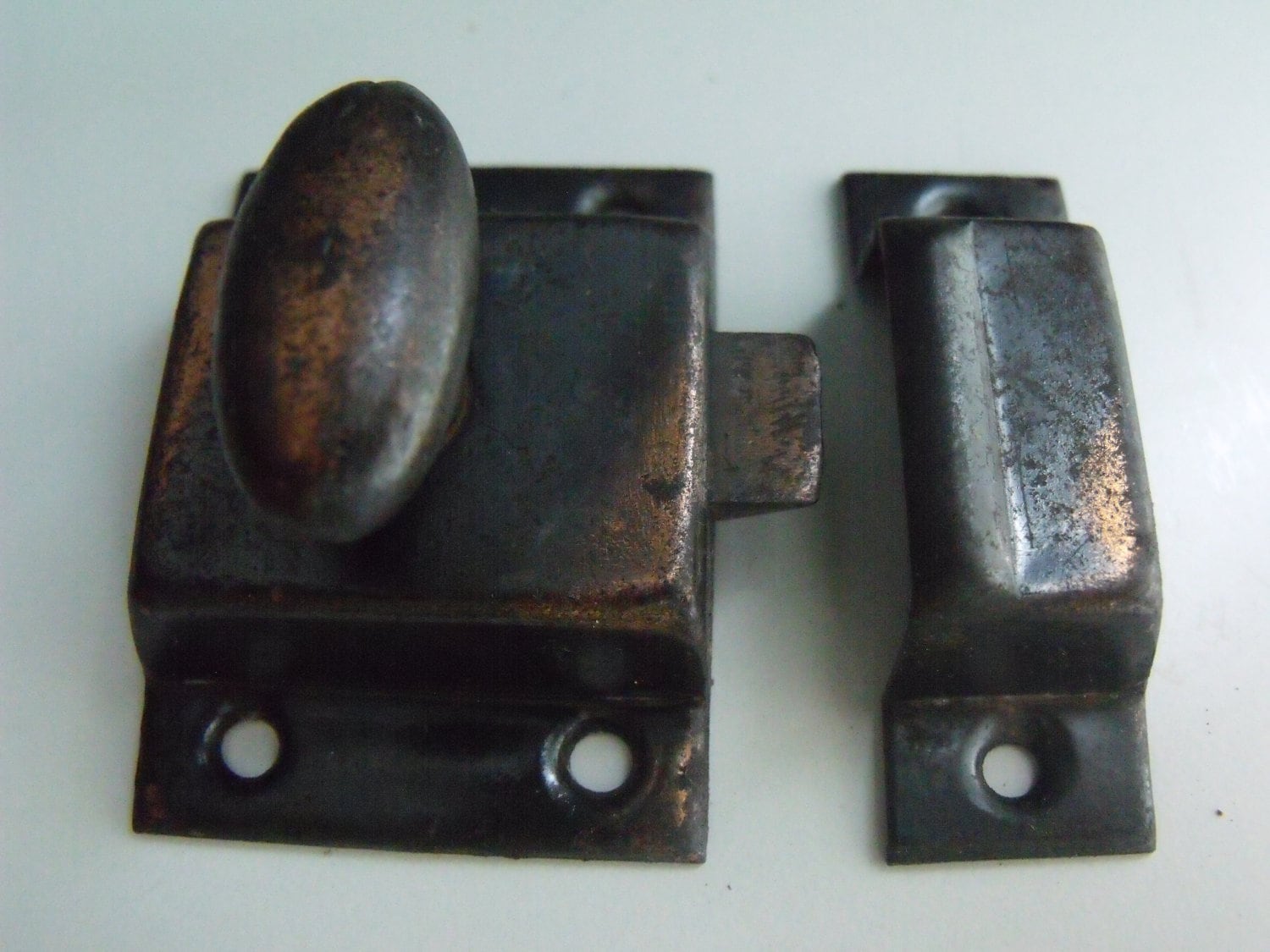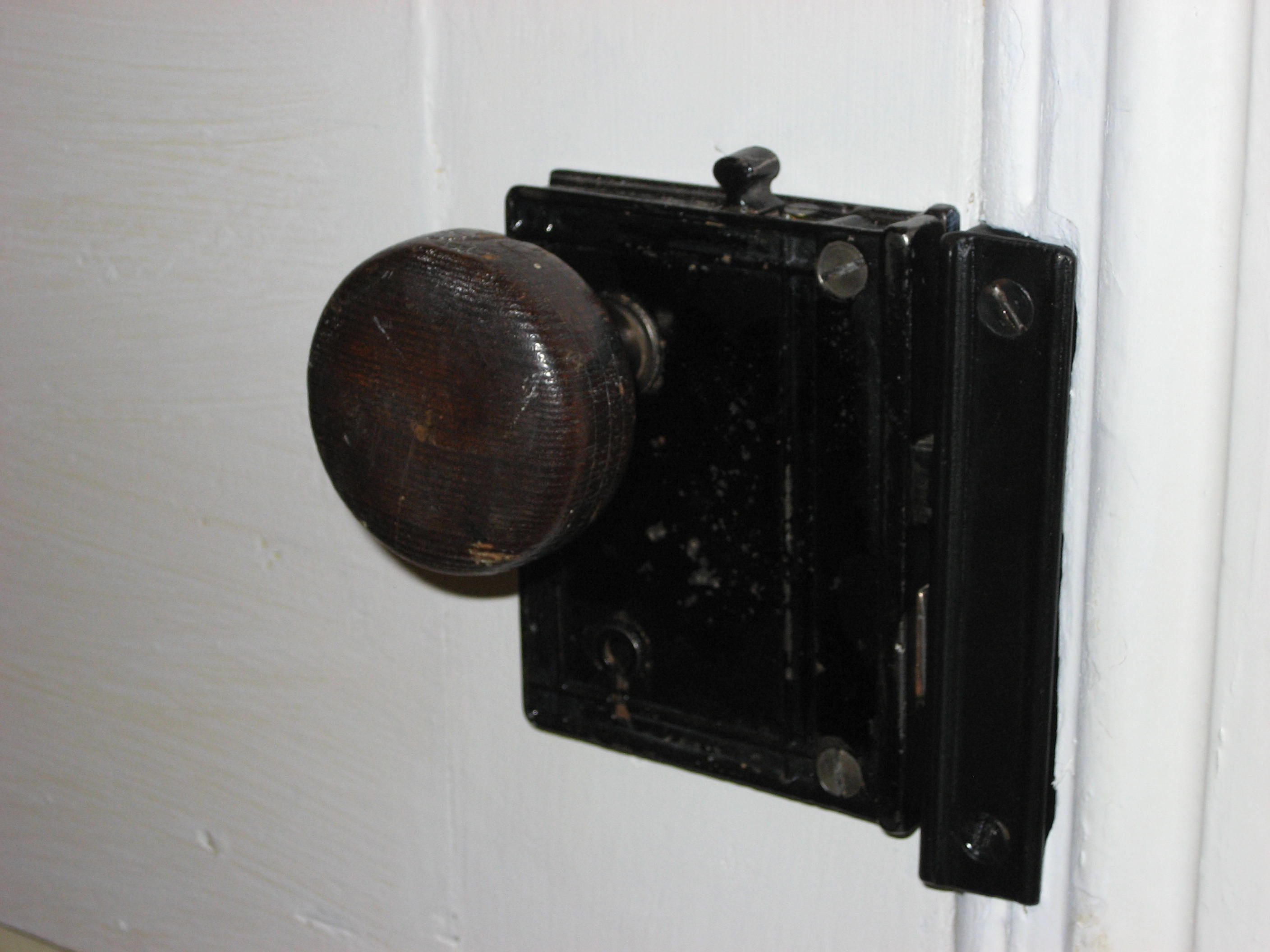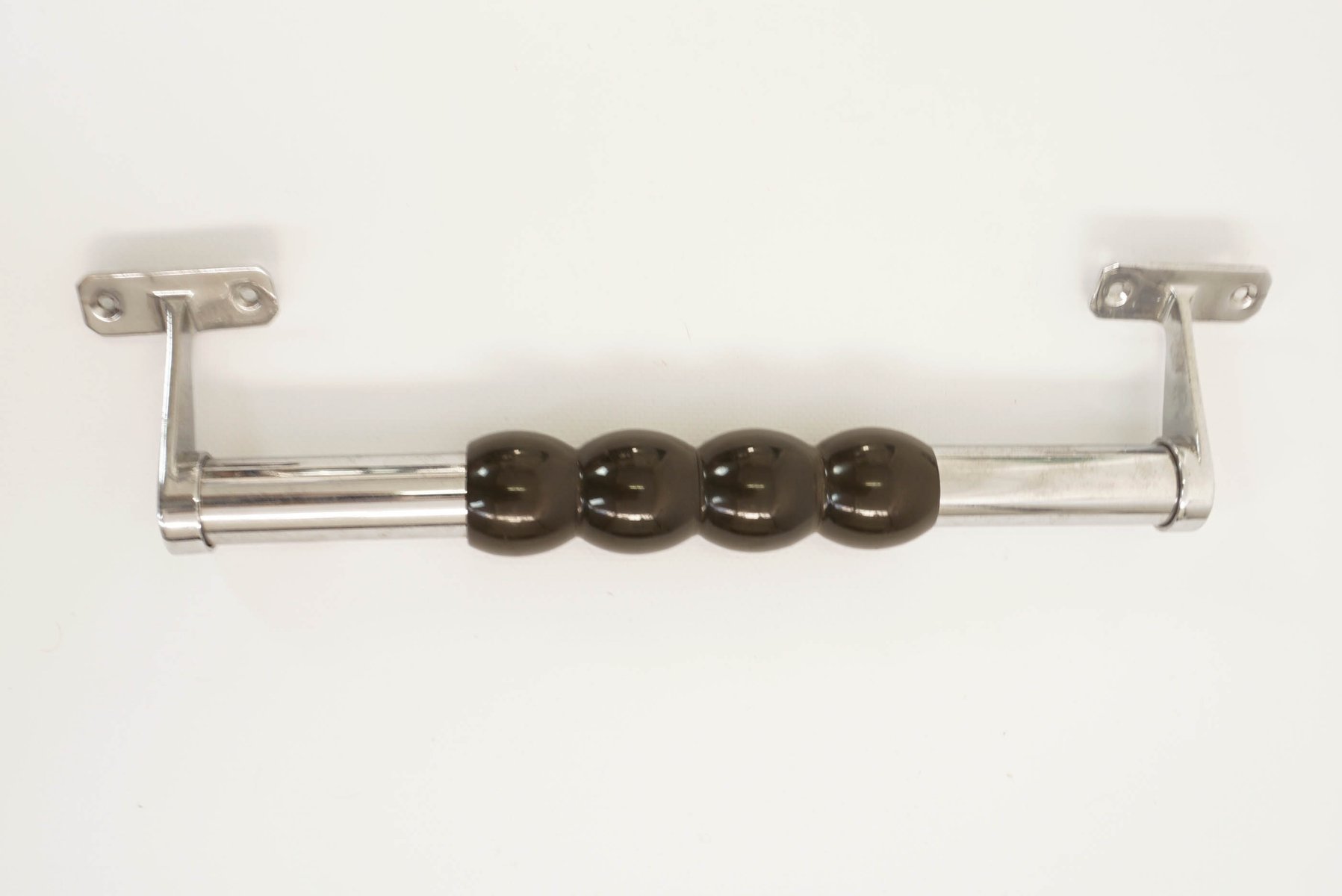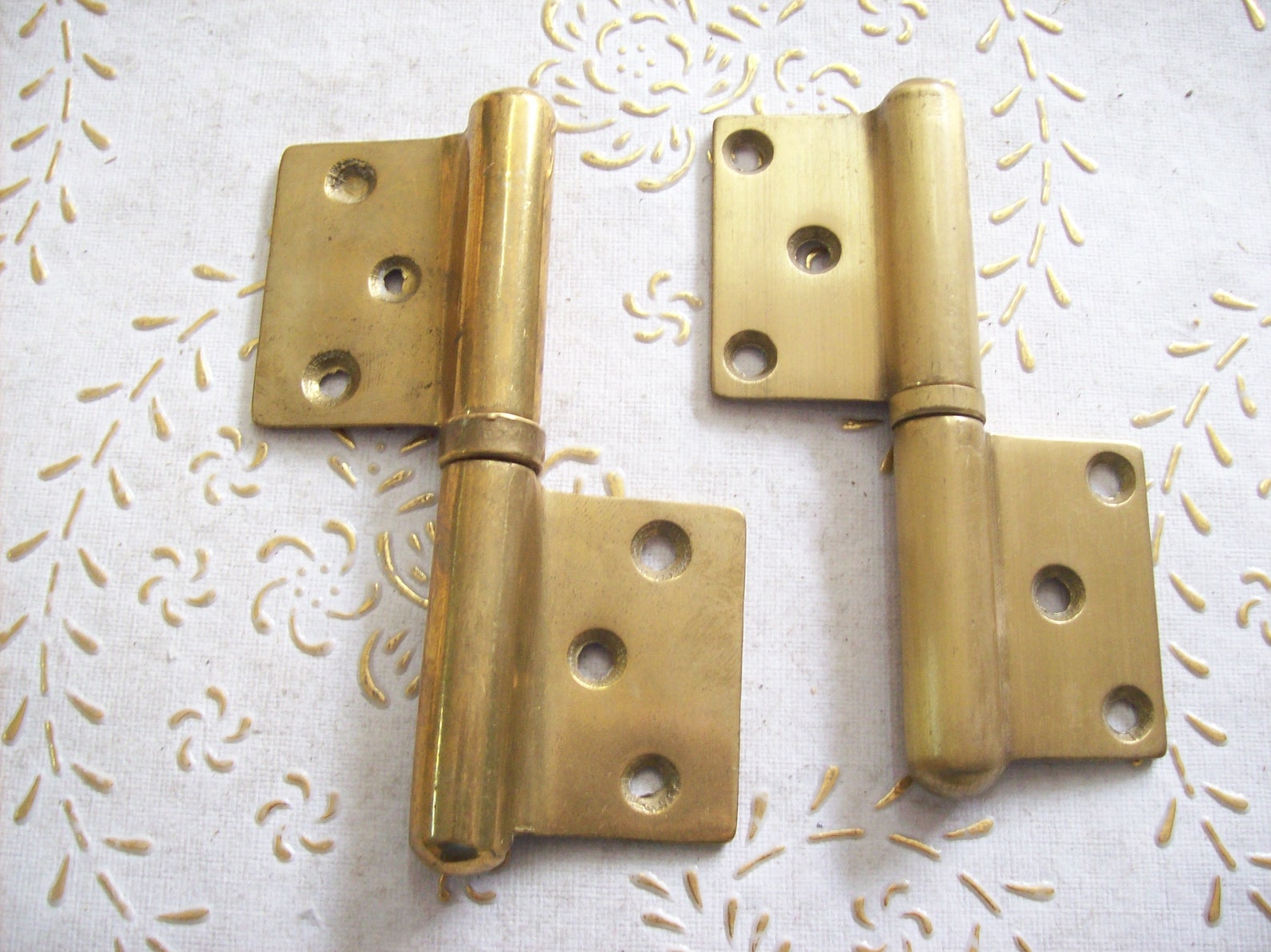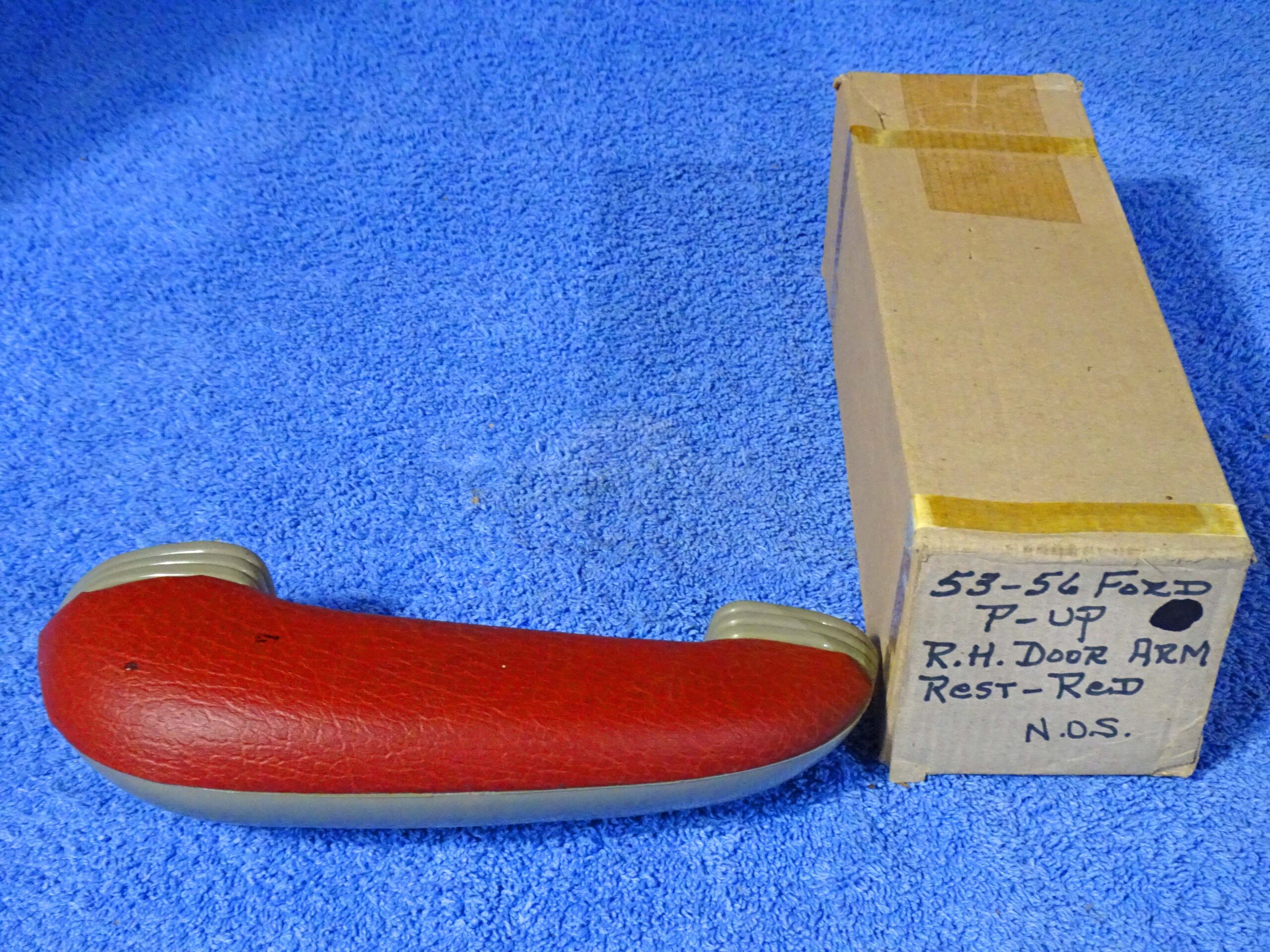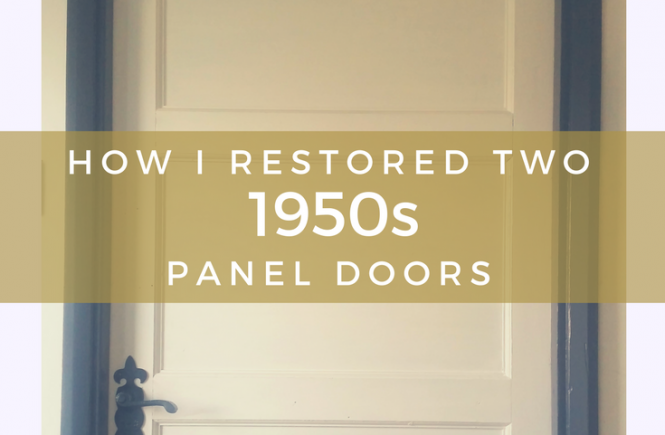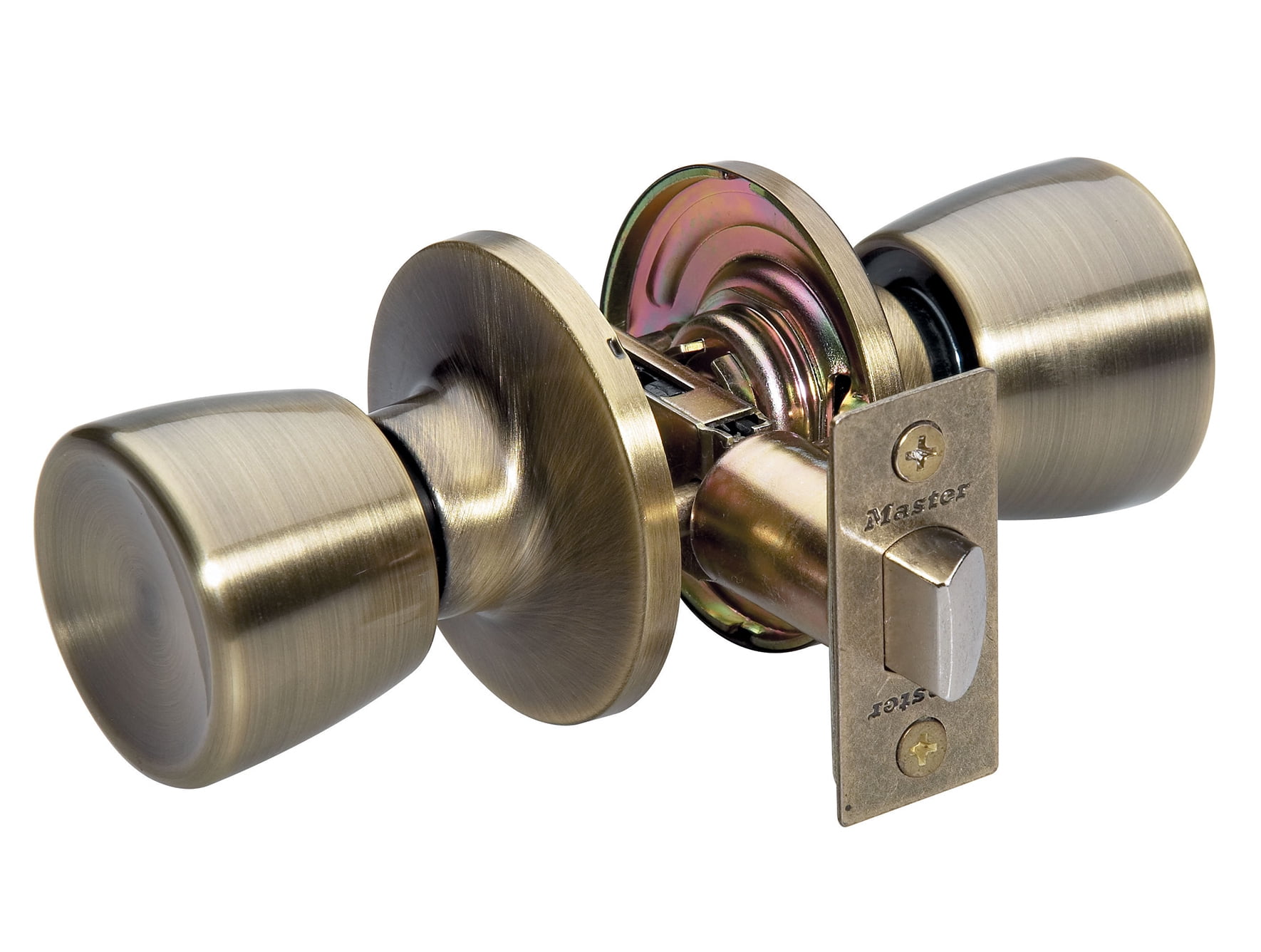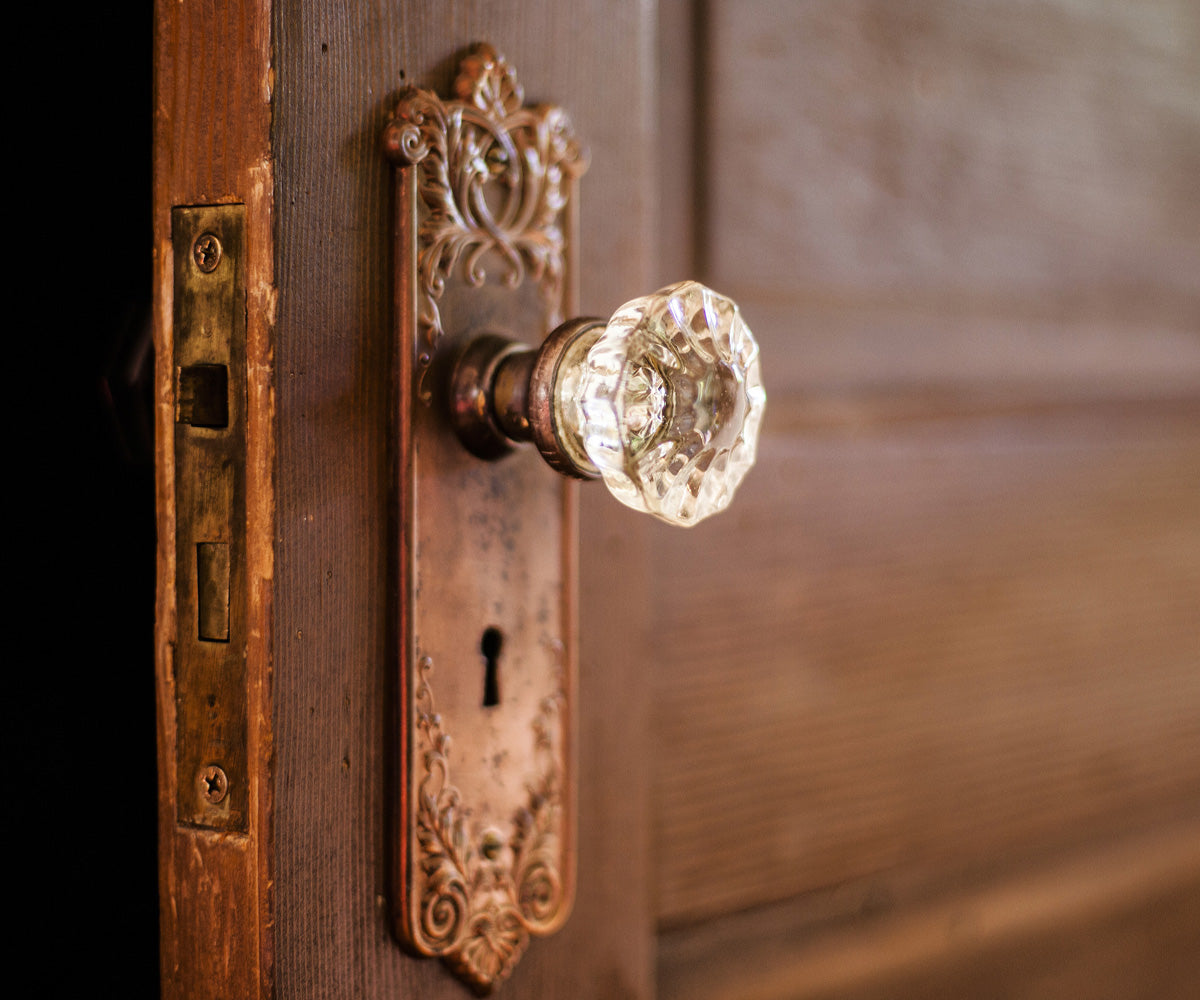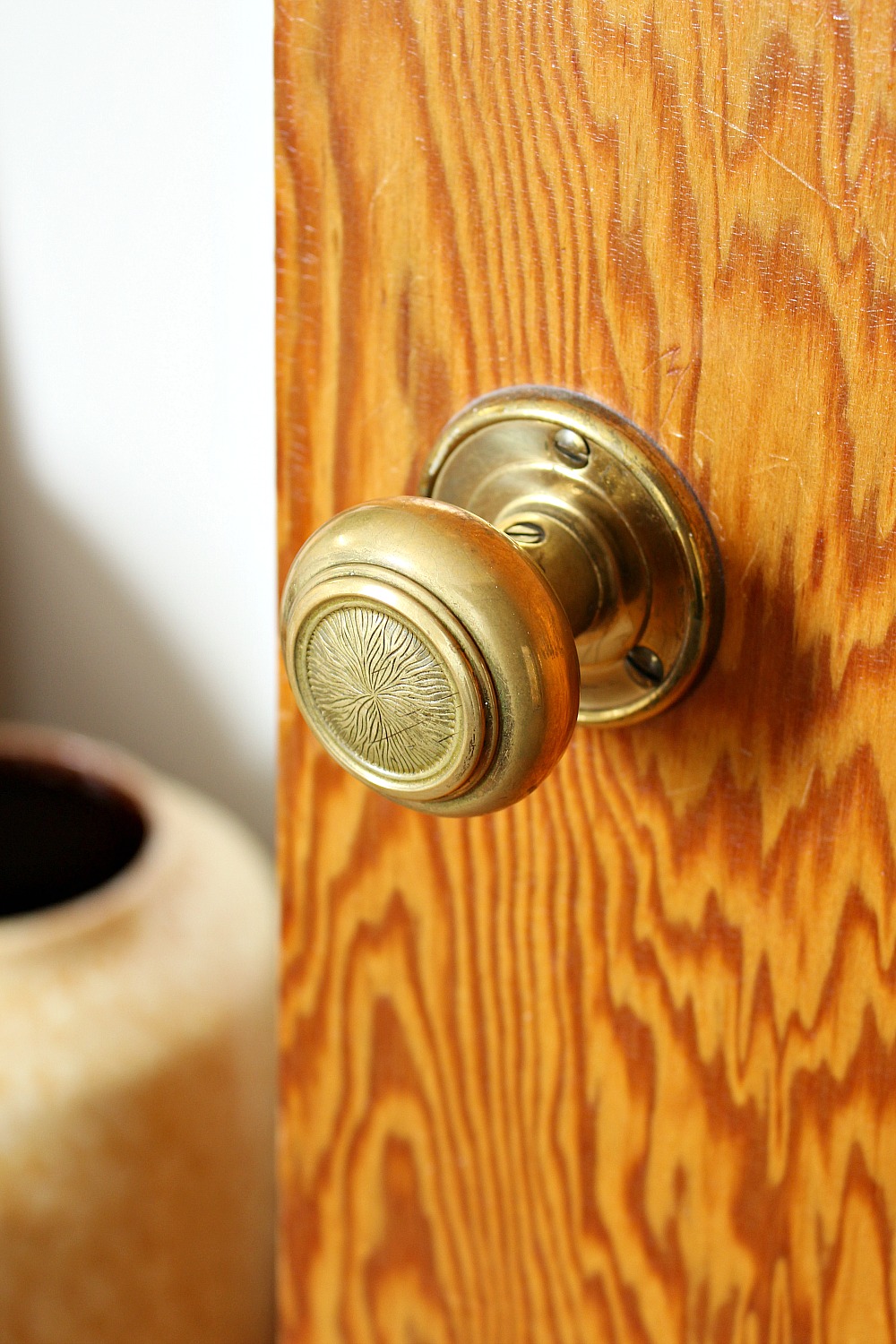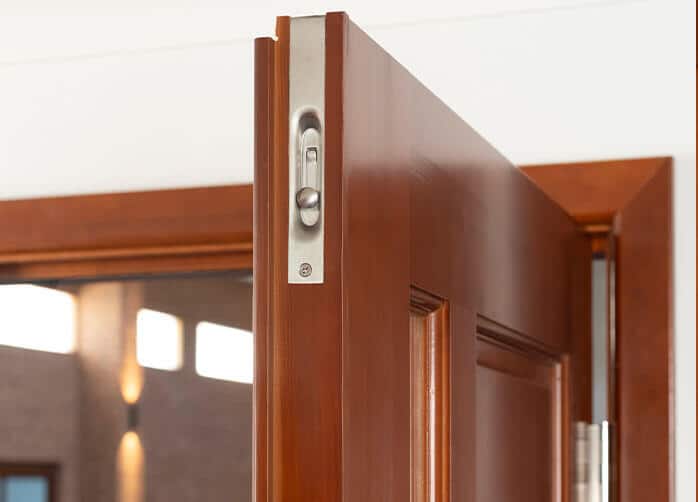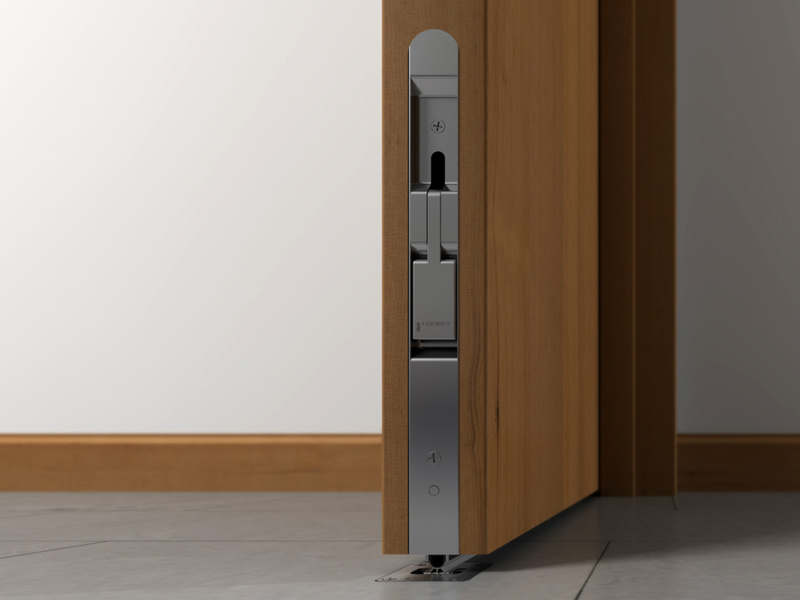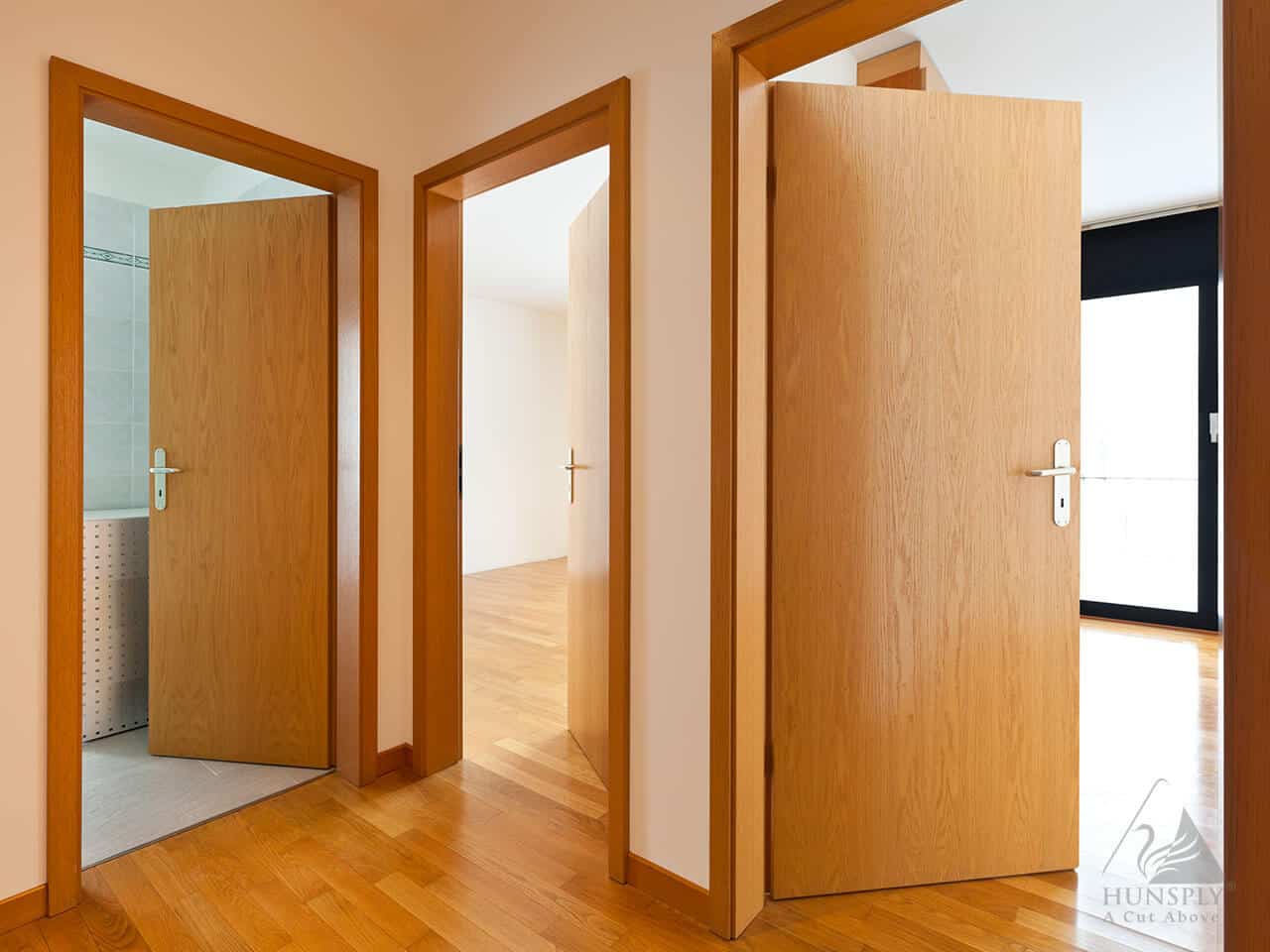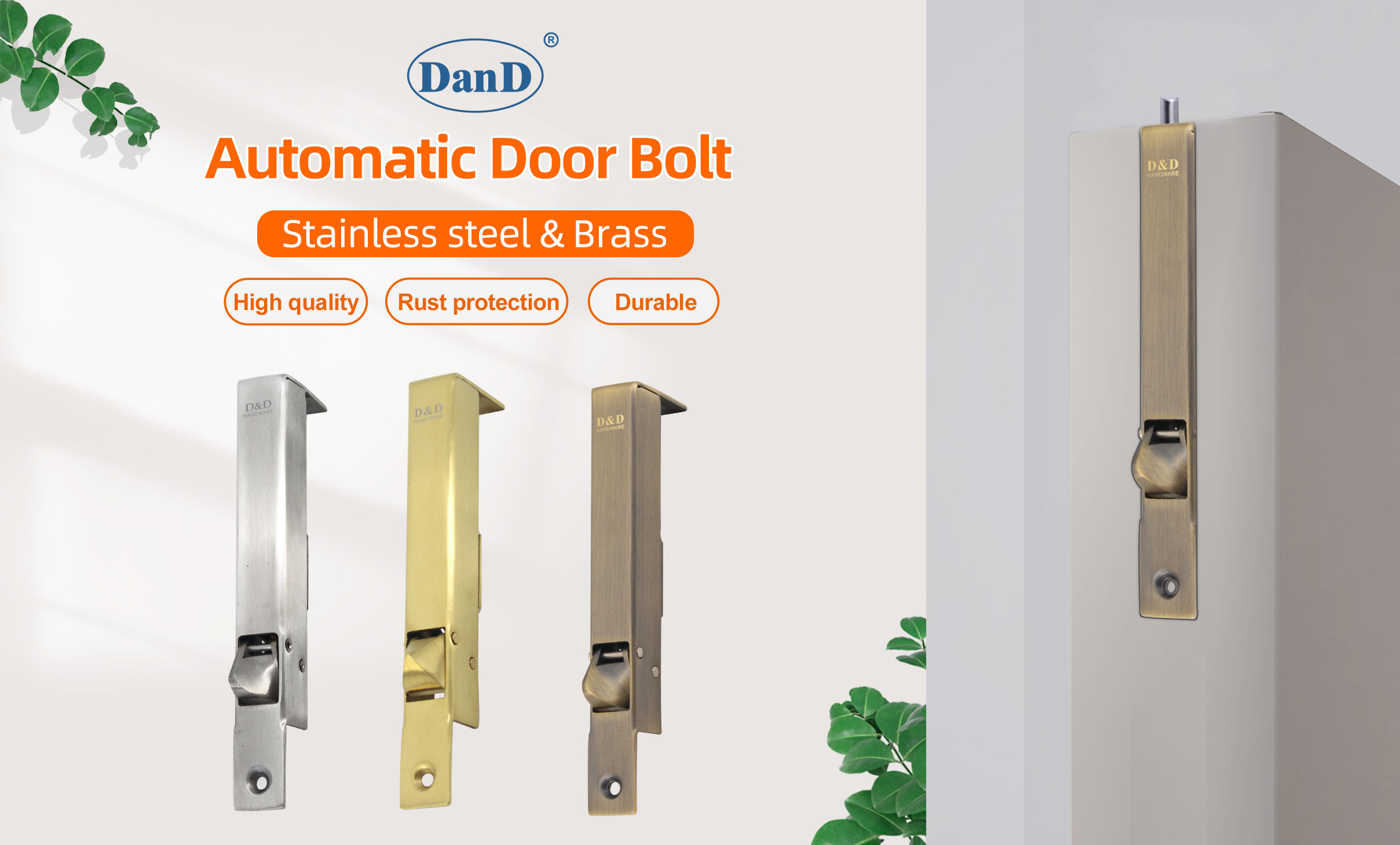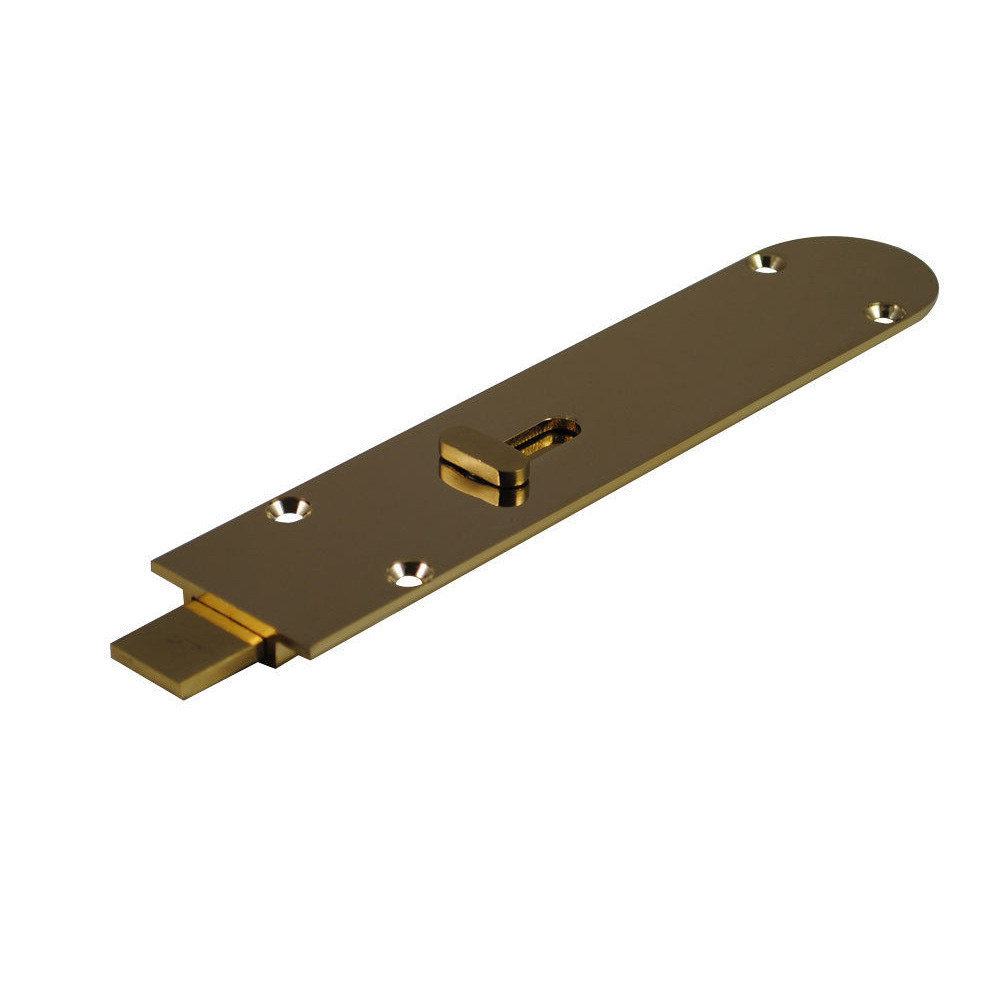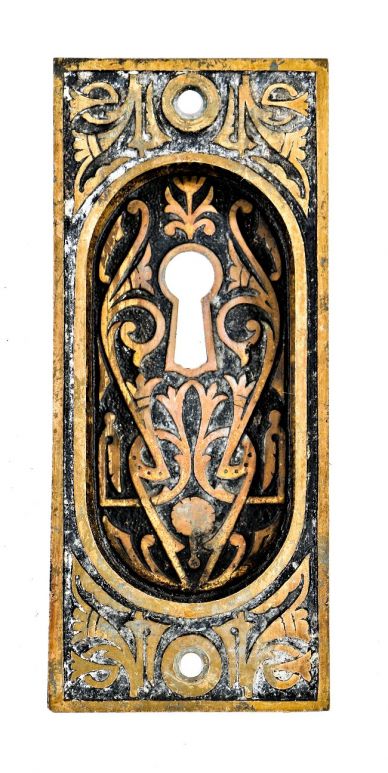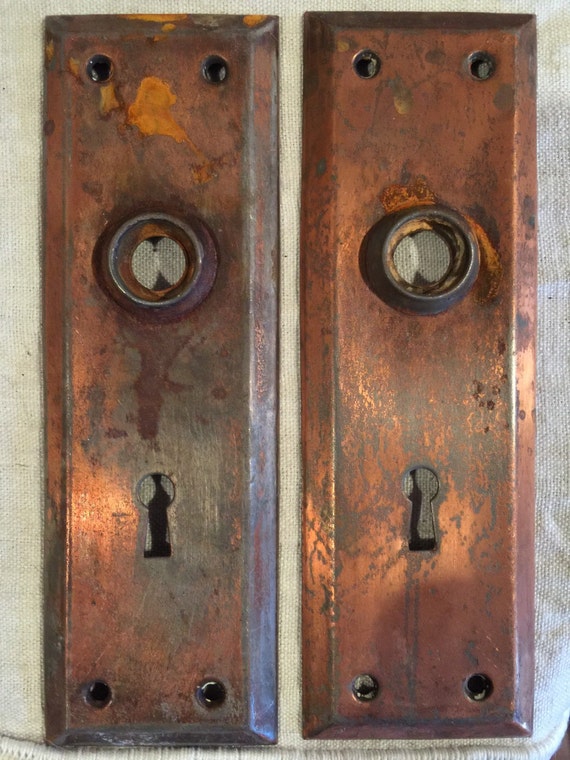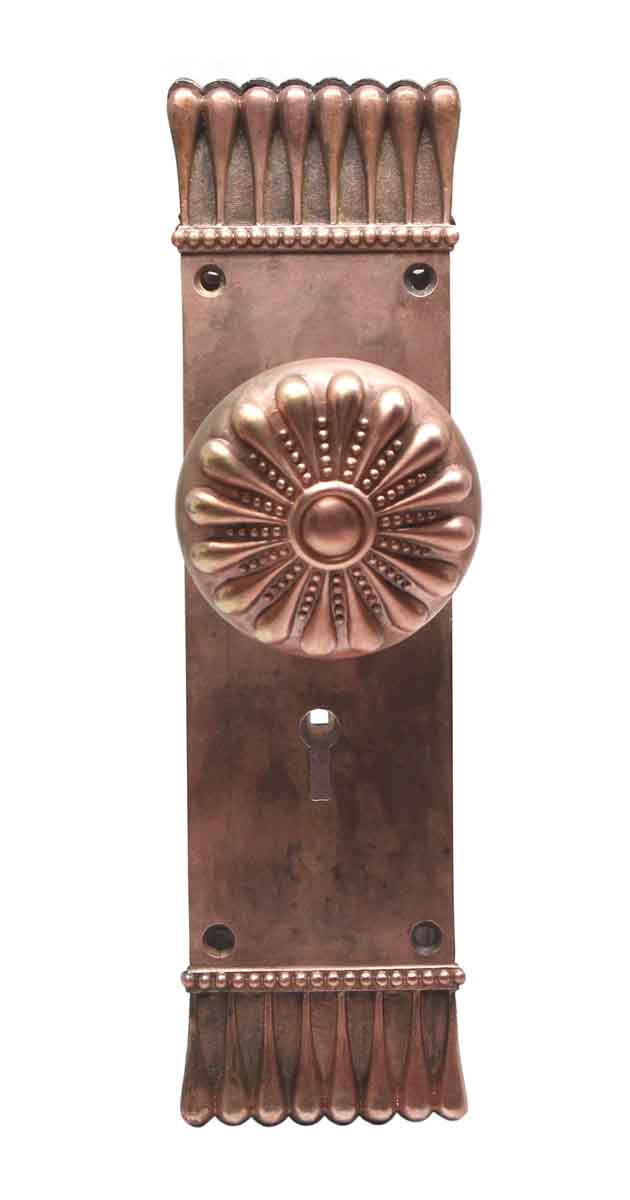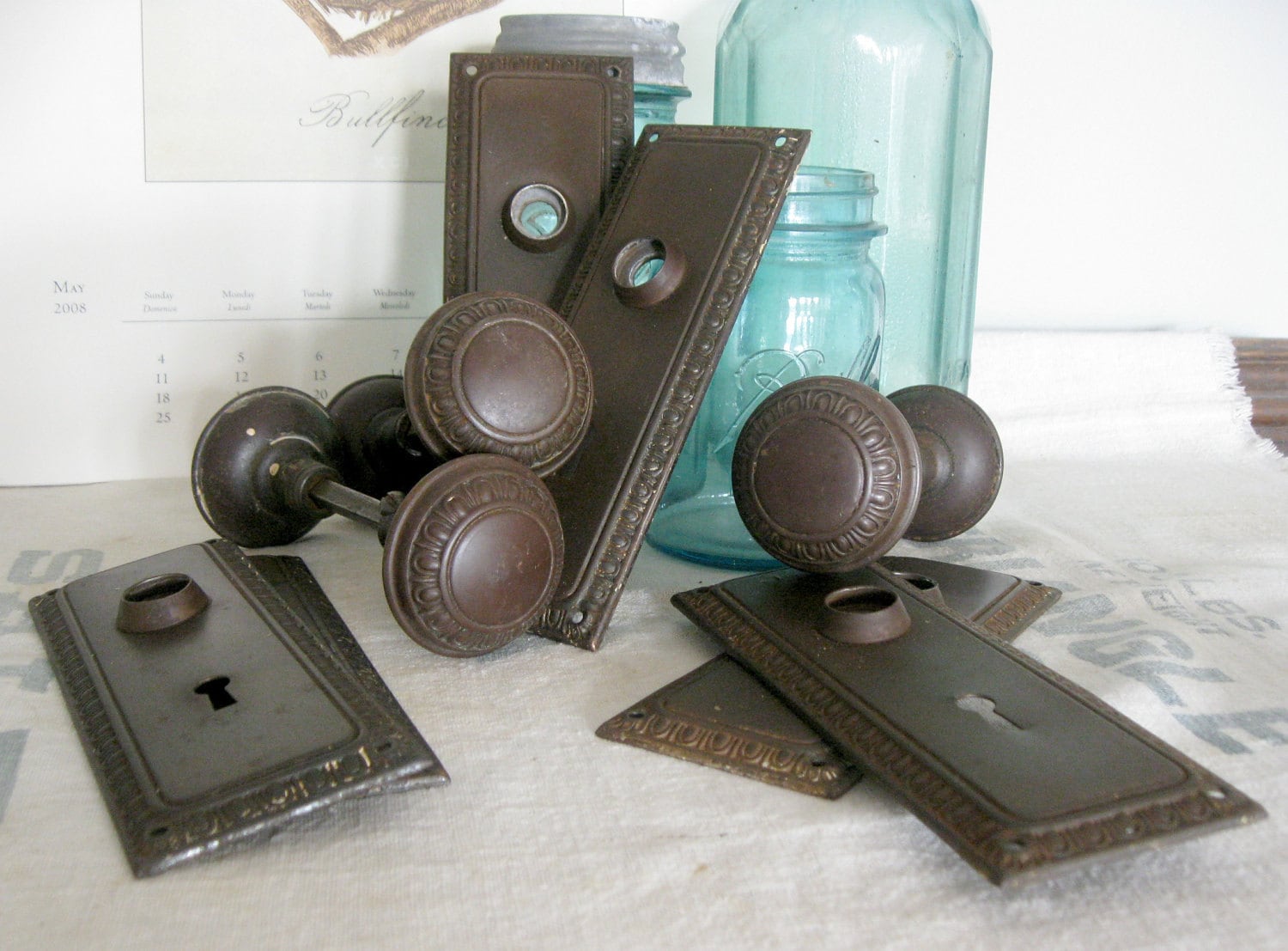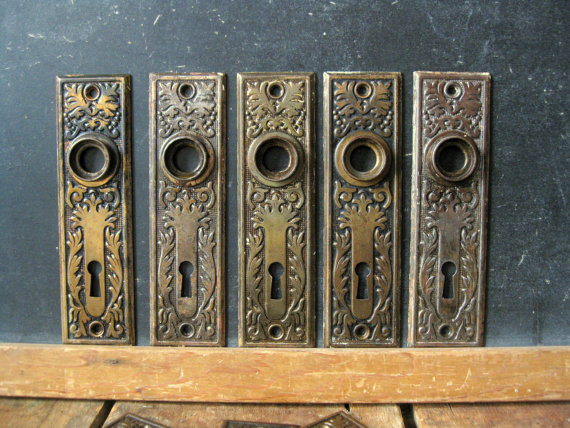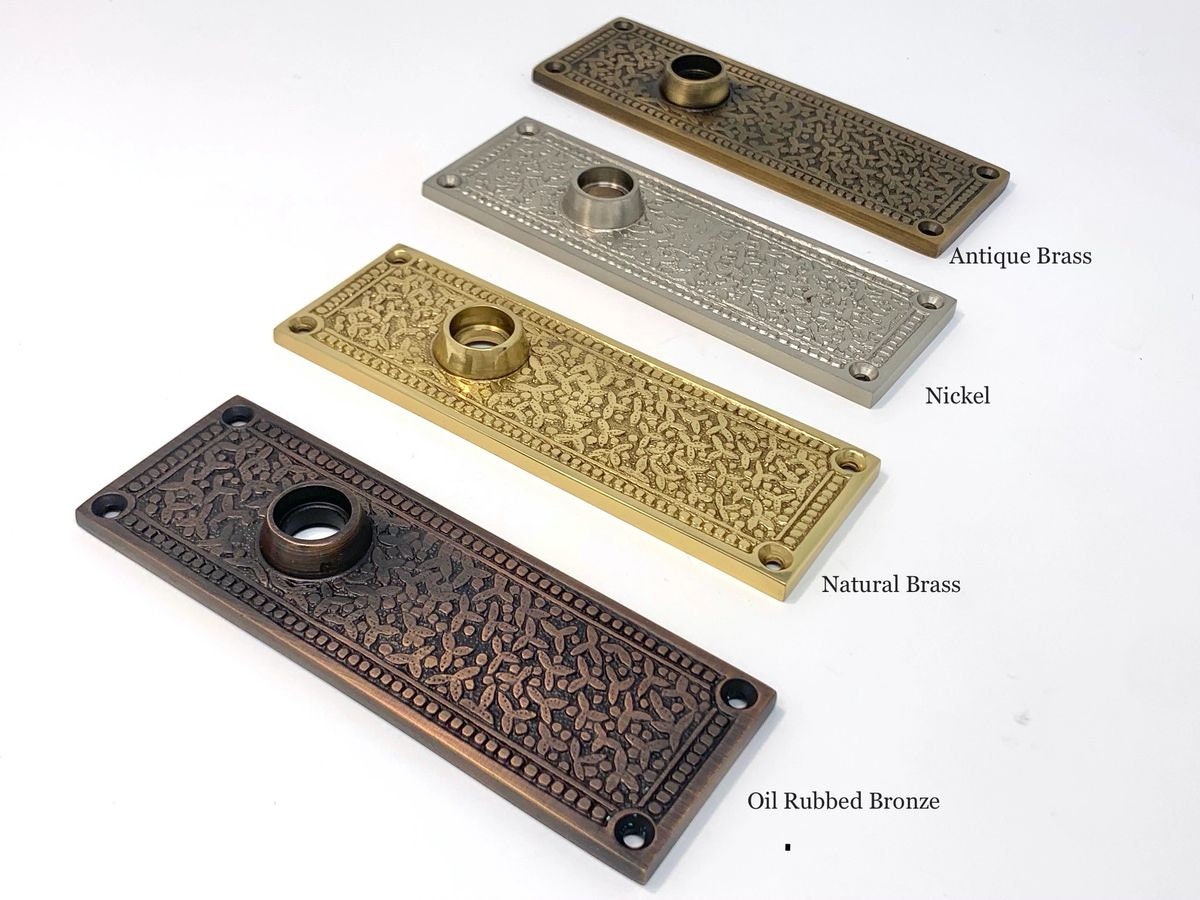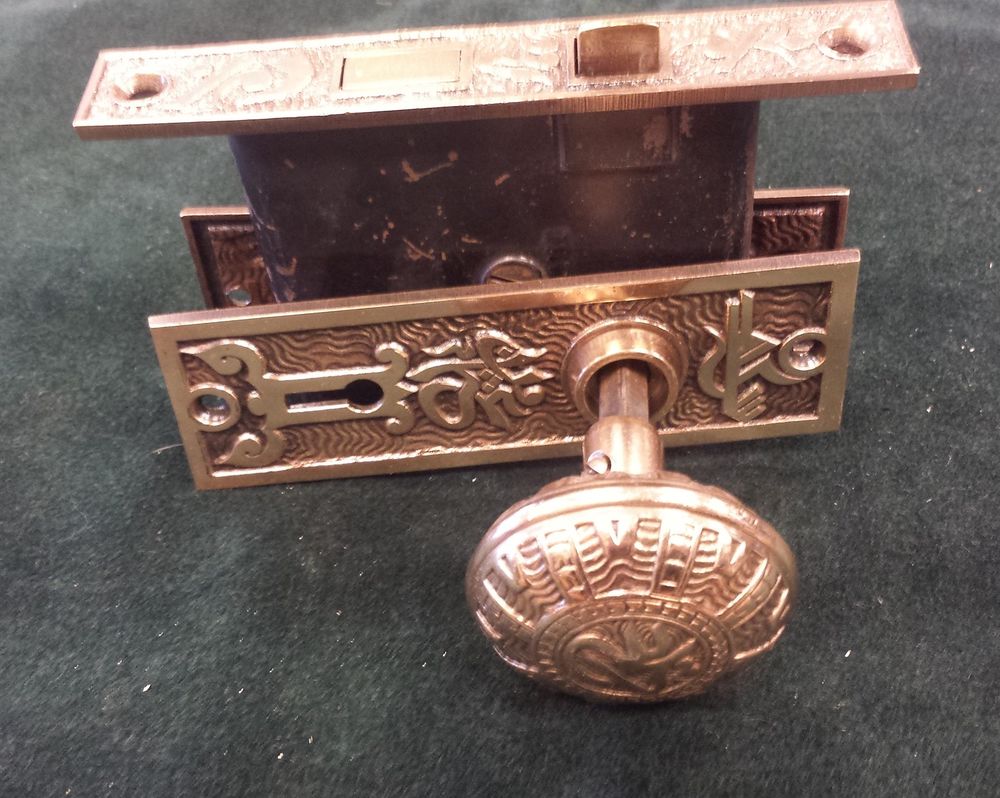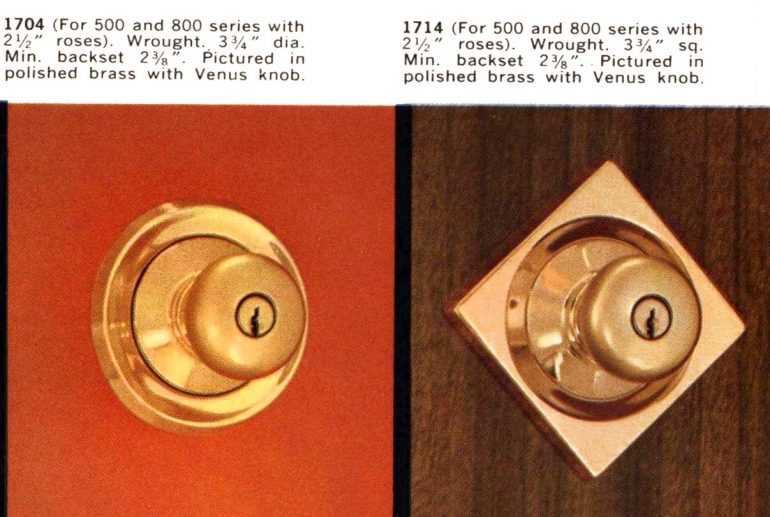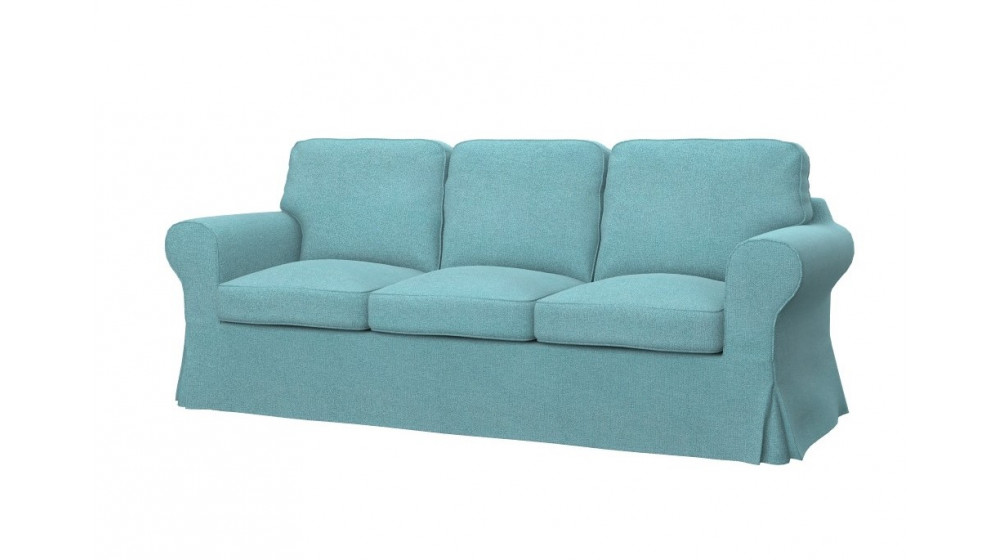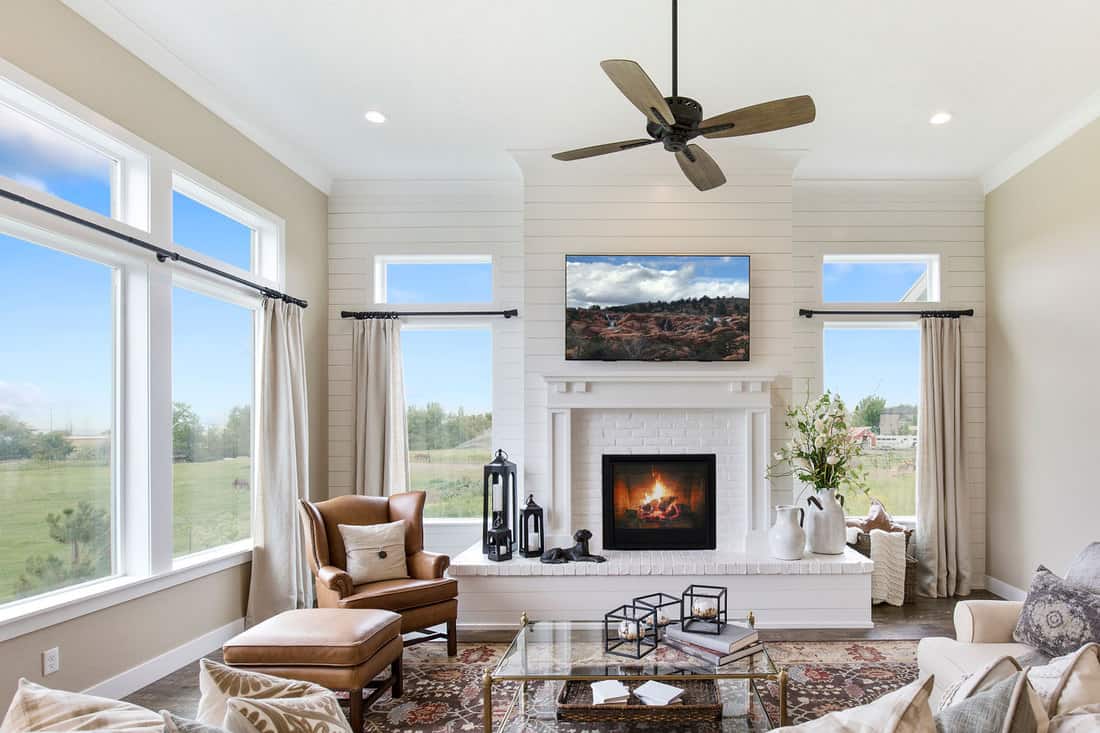When it comes to interior door hardware from the 1950s, nothing is cooler then the vintage door knobs. While modern door knob options tend to be more functional, 1950s interior door knobs added a layer of style to the overall aesthetic of a home in this decade. If you're aiming for an authentically 1950s look in your own home, you'll want to be sure to include eye-catching door knobs from this era. As trends in interior design changed during this decade, so did the aesthetics of available door hardware options. One of the primary features of this era was the prominent use of bold shapes and designs with brightly colored finishes. From long cylinders to ornate star-shapes, just about anything was possible for door knobs! In addition to the different shapes, 1950s interior door knobs also featured a range of finishes. Shiny brass door knobs were particularly popular, but brushed nickel, chrome, and two-tone metallic blends of black and gold were also available. Metallic finishes weren't the only option, either - home decor from this decade also featured brightly colored carved door knobs made from a variety of materials like wood, marble, and ceramic.
1950s Interior Door Knobs
Interior doors from the 1950s were kept securely shut with door latches, and these weren't just plain and functional. Just like door knobs, door latches from this era also included a range of shapes, sizes, and finishes for home-owners seeking an eye-catching useful piece of interior hardware. Door latches from this era usually featured rounded edges and a beveled design. Many door latch finishes were a match to the door knob finish, allowing for a uniform look, but there were also some contrast options available. Matte black latches or latches with white enamel finishes were suprisingly popular with bright door knob finishes. For an authentic 1950s look, go for a beveled interior door latch with a matching finish for the door knob. An alternative look that spoke to current trends was a contrast latch to bring in a sense of modernity without taking away from the overall aesthetic.
1950s Interior Door Latches
An essential element of 1950s interior doors is the door handle. Whether it be a knob setup oring a long bar handle with intricate shapes, these seemingly small, but essential items were key to the overall look and feel of a home. Unlike door knobs, door handles weren't as widely available in uniquely shaped designs. While there were some unique shapes, most door handles featured a long, straight design with ornate sculpted details. These details were usually featured in a contrasting metal against the overall finish, either in bright brass or chrome contrasting against a black enamel finish. Long bar handles were popular during this period, but due to the limited space available to them, they didn't feature much of an ornate design. If you are looking to add a vintage 1950s feel to your home, consider adding a pair of long bar handles with an ornate sculpted detail in a contrasting metal finish.
Vintage 1950s Interior Door Handles
Interior door pulls were used during the 1950s to provide an easy way to open or close a door without a lot of effort. While mostly functional items, door pulls still featured some interesting design elements that added a bit of style to an exterior or interior door. Most door pulls from this era were round and featured intricate designs etched into them. The round shape of these door pulls was ideal for fitting in the user's hand for easy use. A variety of materials were used to create these door pulls, including wood, brass, copper, and even ceramics. Finishes for these door pulls ranged from polished brass to black enamel and even bright chrome. For a true 1950s feel, you'll want to choose door pulls featuring a round shape and intricate design etched into its surface. Stick to materials and finishes that are true to this period, such as wood, brass, copper, and ceramic paired with bold, bright finishes.
1950s Interior Door Pulls
Interior door hinges provide an easy way to open or close a door without much effort. During the 1950s, these interior door hinges came in a wide variety of shapes, sizes, and materials. The most popular materials for door hinges in this decade were brass and steel, both of which were available in polished, brushed, and painted finishes. Polished brass hinges provided a luxurious look to any interior door, while painted or brushed finishes lent an industrial feel to a space. Steel was also a popular option but due to its lower cost than brass, it was often used to reduce cost. When searching for hinges to authentically recreate a 1950s look, be sure to choose brass or steel in a matching finish to the door knob. Metal finishes common to this era included polished brass, brushed nickel, chrome, and black.
1950s Interior Door Hinges
Interior door arms were a popular piece of door hardware used in the 1950s, providing an aesthetically pleasing connection between the door and its frame. Like other pieces door hardware from this era, interior door arms featured ornate designs and plenty of design variety. The door arms from this era typically featured arched designs, inspired by the period's affinity for curved geometric patterns, and were usually made from brass, copper, or steel. Finishes ranged from bright enamels to polished metals, with many door arms featuring a two-tone mix of two of these surfaces. If you're looking to add some 1950s style to your interior doors, consider going for ornate and arched designs in a matching two-tone finish. Polished brass, copper, and steel were the most popular material for door arms during this time.
1950s Interior Door Arms
For extra security, a door lock was often fitted as part of the door hardware in the 1950s. Antique door lock sets from this era featured decorative designs that added a layer of style to an interior door. Door locks from this era had 3 main components - the knobs, the latch, and the rod. Most of these parts featured heavily ornate carved details to match the rest of the door hardware and could be found in a wide range of materials and finishes, such as brass, copper, bronze, and steel. Finishes ranged from polished metals to black enamels and sometimes featured a two-tone mix of two surface textures. A door lock from the 1950s can add a finishing touch to an interior door with ornate carved details and a classic metal finish. Choose materials and finishes that match the other pieces of door hardware it's paired with for a truly authentic 1950s look.
Antique 1950s Interior Door Lock Sets
Flush bolts were used in the 1950s to secure doors to the frames. These bolts have an ultra-smooth design that blends perfectly with the door they're attached to. Flush bolts are low profile, which gives them an almost unobtrusive look and feel. Flush bolts from this era featured a variety of designs and finishes, but were mostly available in plain metals such as brass and steel. Finishes for uush bolts ranged from polished metallic to black enamels, with some door hardware sets featuring a two-tone mix between two different surfaces for an eye-catching look. For an authentically 1950s interior door, pair it with flush bolts in a matching material and finish. Metal flush bolts with a polished finish were the most popular choice during this era, but for an alternative look you could opt for flush bolts in a contrasting two-tone finish of metal and black enamel.
1950s Interior Door Flush Bolts
Escutcheons are used to connect a door knob to the door or frame, and in the 1950s they were available in some really interesting shapes and often featured intricate detail. Escutcheons during this era were mostly made from brass, copper, and steel with a variety of eye-catching finishes. Escutcheons from this era often featured intricate carved designs with the material it was made from, such as brass or copper. Finishes came in a variety of colors, but mostly featured plain metals such as brass and steel as well as black enamel. There were also some escutcheons featuring a two-tone finish of plain metal and black to add a bit of drama to an otherwise plain door knob. If you want to re-create an authentically 1950s look, go for an escutcheon with an intricate carved design in a matching finish to the door knob. Stick to plain metals and black enamels for the best effect.
1950s Interior Door Escutcheons
In order for a door knob to open and close correctly, the door must be equipped with a door jamb strike. The door jamb strike is the metal piece that connects the door knob to the frame. During the 1950s, door jamb strikes were available in a variety of sizes and shapes, with some featuring intricate or embossed details. Jamb strikes from this decade were mostly made from brass or steel, although brass was quite popular due to its ability to resist corrosion. Finishes for these strikes were available in a variety of colors such as polished metals, black enamels, and two-tone mixes of metal and black. For an authentically 1950s look, choose a jamb strike with a matching material and finish to the door knob. Popular finishes during this era included polished brass, black enamel, and two tones of metal and black.
1950s Interior Door Jamb Strikes
Doorknob backplates were a popular piece of door hardware used in the 1950s, and they featured a variety of interesting designs. These backplates were usually made from brass or steel and featured ornate designs with intricate detailing. Finishes for these backplates ranged from glossy black enamels to polished metals and even two-tone mixes of metals and black. 1950s Interior Door Knob Backplates
The Decorative Function of 1950s Interior Doors Hardware
 Designers of 1950s
interior doors
gave much attention to the decorative details of the door handles, hinges, and locks. As the anchor-point to your doorway opening, interior door hardware became a way to show off personal design preferences.
It was during this decade that the modernist style gained relevance. Due to the
simpler
design principle the “less is more” concept gained popularity. Door handles and knobs become SATA features, so much that magazines like
Better Homes and Gardens
propelled its 170 “newest door styles”.
The embraced freedom of the era and economical condition at the time, drove architecture to experiment with decorative solutions for each area in the home. The previously reserved style used in
door hardware
, changed to become more daring.
Designers of 1950s
interior doors
gave much attention to the decorative details of the door handles, hinges, and locks. As the anchor-point to your doorway opening, interior door hardware became a way to show off personal design preferences.
It was during this decade that the modernist style gained relevance. Due to the
simpler
design principle the “less is more” concept gained popularity. Door handles and knobs become SATA features, so much that magazines like
Better Homes and Gardens
propelled its 170 “newest door styles”.
The embraced freedom of the era and economical condition at the time, drove architecture to experiment with decorative solutions for each area in the home. The previously reserved style used in
door hardware
, changed to become more daring.
Popular Design Choices for 1950s Interior Doors
 This period saw door
knobs
embracing brightly-colored porcelain that carried mid-century modernist designs. Designers also used glass for door accessories taking interior design to a more abstract level.
Brightly-colored steel was also among the most popular materials of the decade, during a period where the sturdiness of a door handle was valued rather than the ornamental appeal.
Improving production methods and cost efficiency made door hardware, like handles, knobs, and keyholes among the more affordable design finishes.
This period saw door
knobs
embracing brightly-colored porcelain that carried mid-century modernist designs. Designers also used glass for door accessories taking interior design to a more abstract level.
Brightly-colored steel was also among the most popular materials of the decade, during a period where the sturdiness of a door handle was valued rather than the ornamental appeal.
Improving production methods and cost efficiency made door hardware, like handles, knobs, and keyholes among the more affordable design finishes.
Interior Door Hardware in the 1950s for Every Home
 Thought the designs of 1950s interior door hardware was mainly characterized for their geometric and abstract shapes, there were still options for a more traditional feel.
Door locks with plate designs or detailed etchings and cunning features like reversible thumb turn devices, which allowed they key to be used from both side, were popular choices for a more
classy
look.
In conclusion, 1950s interior door hardware, even if similar at its base, offered
an array of exotic styles for any kind of taste
, embracing the industrial era’s creative liberties while still welcoming traditionalism into a new modernist era.
Thought the designs of 1950s interior door hardware was mainly characterized for their geometric and abstract shapes, there were still options for a more traditional feel.
Door locks with plate designs or detailed etchings and cunning features like reversible thumb turn devices, which allowed they key to be used from both side, were popular choices for a more
classy
look.
In conclusion, 1950s interior door hardware, even if similar at its base, offered
an array of exotic styles for any kind of taste
, embracing the industrial era’s creative liberties while still welcoming traditionalism into a new modernist era.








